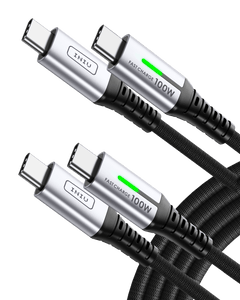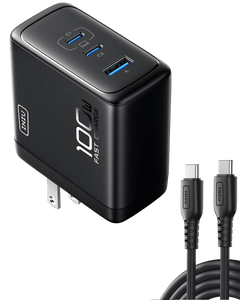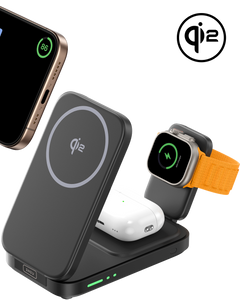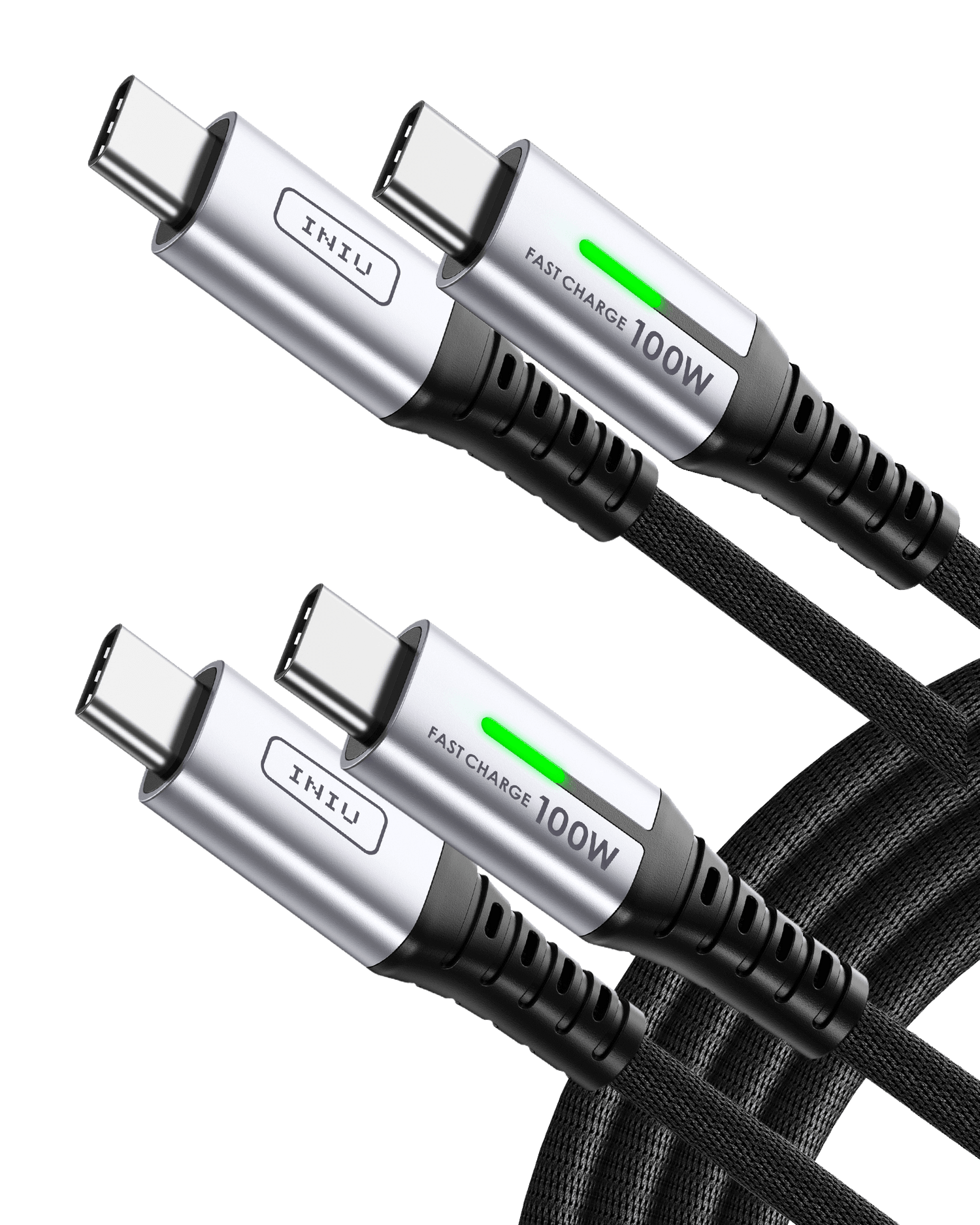
Phone Not Charging? The Ultimate Guide to Fixing Phone Charging Issue
There are few modern anxieties as sharp as watching your phone's battery icon turn red, plugging it in, and seeing... nothing. This common phone charging issue is incredibly frustrating, but the solution is often simpler than you think. Before you schedule a costly repair or start shopping for a new phone, take a deep breath.
This ultimate guide will demystify the world of smartphone charging. We will walk you through a step-by-step diagnosis to solve your immediate phone charging issue, help you navigate the confusing market of charging accessories, and teach you the best practices to keep your battery healthy and your devices safe for years to come.
How to Diagnose and Fix Your Phone Charging Issue

When faced with a charging problem, don't panic. Most issues stem from one of four areas: the power source, the cable, the charger adapter, or the phone itself. By troubleshooting systematically, you can quickly identify and fix the culprit behind your phone charging issue.
Step 1: The Simple Stuff - Check Your Power Source and Connections
Before dissecting your gear, confirm the basics. These simple checks resolve a surprising number of charging problems.
Is the Outlet Working? It sounds obvious, but it's a frequent oversight. Plug a lamp or another appliance into the same wall outlet to confirm it's delivering power. If not, check your circuit breaker.
Are You Using a Reliable Source? A wall outlet is the gold standard. Charging from a laptop's USB-A port is significantly slower and can sometimes be unreliable. Low-quality car chargers or old power strips can also be a source of a persistent phone charging issue.
Are All Connections Secure? A loose connection is a dead connection. Firmly push the cable into the charger brick and the charger into the wall. Most importantly, ensure the cable is fully seated in your phone's charging port. You should feel a slight click or solid resistance.
Step 2: Inspect Your Charging Equipment - The Usual Suspects
Your cable and charger adapter endure daily abuse. Wear and tear is the leading cause of most charging failures.
The Charging Cable
Visual Inspection: Look closely at both ends of the cable and along its length. Do you see any exposed wires, fraying, sharp kinks, or discoloration? Damage is most common at the flexible joints where the cable meets the connector head.
The "Wiggle Test": If your phone only starts charging when you hold the cable at a specific, awkward angle, the internal wiring is broken. This is a clear sign the cable is faulty and needs immediate replacement.
Isolate the Problem: The definitive test is to try a different, known-working cable with your phone and charger. If the phone starts charging, you've found your phone charging issue.
The Wall Adapter
Overheating: A charger will get warm during use, but if it's uncomfortably hot to the touch, unplug it immediately. This indicates an internal fault and is a potential fire hazard.
Swap and Test: Use your known-working cable with a different wall adapter. If this combination works, your original adapter is the problem.
Step 3: Examine the Phone Itself - Port, Software, and Battery
If your cable and charger are fine, the focus shifts to the phone.
The Most Common Culprit: A Dirty Charging Port
Over months and years, lint, dust, and pocket debris get packed tightly into the charging port. This compacted gunk prevents the charging cable from making a solid electrical connection, leading to a frustrating and intermittent phone charging issue.
How to Safely Clean Your Charging Port:
- Power off your phone completely. This is a critical safety step.
- Use a can of compressed air to blow short bursts into the port. This will dislodge any loose debris.
- For compacted lint, use a non-metallic, thin tool. A wooden or plastic toothpick is ideal. Gently scrape along the inside walls of the port, being careful not to touch the central charging pins. Use a scooping motion to pull the debris out. You might be shocked at what you find.
- NEVER use metal objects like paper clips, safety pins, or staples. These can easily scratch the sensitive contacts or cause a short circuit, turning a simple fix into a costly repair.
Software Glitches and Simple Resets
Sometimes, the software that manages charging can crash. The oldest trick in the IT book often works: turn your phone off and on again. A simple restart can resolve temporary bugs that are preventing your phone from recognizing a charger.
Battery Health and Temperature Protection
Modern phones have safety mechanisms to protect the battery. If the phone is too hot (e.g., left in a hot car) or too cold, it will pause or prevent charging until it returns to a safe operating temperature.
Check your battery's health. On an iPhone, go to Settings > Battery > Battery Health & Charging. On Android, you may need a third-party app like AccuBattery. If the "Maximum Capacity" is significantly degraded (typically below 80%), the battery may no longer be able to hold a charge effectively and might need to be replaced.
A Buyer's Guide to Gear That Prevents Future Phone Charging Issues

Investing in the right charging gear is about more than just speed; it's about safety, durability, and protecting your expensive smartphone.
Choosing the Right Cable: Beyond the Basics
For iPhone Users: Choose charging cables that are built with premium chips and tested for full compatibility with iPhone and iPad devices. INIU cables are designed to ensure stable charging, prevent overheating, and deliver reliable performance across Apple and Android ecosystems.
For Android Users: Stick to trusted brands like INIU, Anker, Belkin, and UGREEN — all known for strict quality control and advanced safety protection.
Durability and Power:
For everyday phone charging, durability matters just as much as speed. A nylon braided USB-C cable is the smart choice — it's built to resist bending, twisting, and everyday wear that often ruins regular cables. INIU's nylon cables combine reinforced joints with premium copper wiring to ensure stable current delivery and longer lifespan. Whether you're charging your iPhone or Android device, INIU's cable offers a perfect balance of flexibility, strength, and reliable fast charging performance.
Choosing the Right Adapter: The Power of GaN and Wattage
Understanding Wattage (W) and Fast Charging: Wattage equals charging speed. To fast-charge your phone, your adapter, cable, and phone must all support the same fast-charging standard, such as Power Delivery (PD) or Quick Charge (QC).
The Future is GaN: Look for chargers using GaN (Gallium Nitride) technology. GaN chargers are significantly smaller, more energy-efficient, and run cooler than older silicon-based chargers.
The One Charger to Rule Them All: Consider investing in a multi-port 100W USB C charger. While your phone might only draw 20-30W, a high-wattage charger is incredibly versatile. It can fast-charge your phone, your tablet, and even power a demanding laptop like a MacBook Pro, all at the same time from a single, compact brick. It's the perfect travel companion and desk-clearing solution.
Choosing the Right Power Bank: Power on the Go
Capacity (mAh): A 10,000mAh power bank will charge a typical smartphone 2-3 times. For longer trips or multiple devices, a 20,000mAh model is a better bet.
Speed Matters: Don't settle for a slow portable charger. A fast charge power bank with PD output can charge your phone from 0 to 50% in about 30 minutes, a lifesaver when you're in a hurry.
Magnetic Convenience: For iPhone users, a magnetic power bank is a game-changer. It snaps directly onto the back of your phone, eliminating the need for cables and providing a secure, convenient charge while you're on the move.
A Special Focus for iPhone Users: Magnetic Charging

One of the most insidious long-term causes of a phone charging issue is physical wear and tear on the charging port. Every time you plug and unplug a cable, you cause microscopic damage. Over thousands of cycles, this leads to a loose, unreliable connection. Magnetic charging elegantly solves this problem.
The Rise of Qi2 and Qi2.2: For years, wireless charging was split. Apple had its magnetic MagSafe system, and the rest of the industry used the universal Qi standard. The Wireless Power Consortium has now launched Qi2 (pronounced "Chee Two"), a new standard that incorporates the Magnetic Power Profile directly from Apple's MagSafe.
What This Means for You: The era of universal magnetic wireless charging is here. Devices and chargers certified for Qi2 or Qi2.2 offer three key benefits:
- Perfect Alignment: The magnets snap the charger into the most efficient position every time, eliminating guesswork and reducing energy loss (heat).
- Faster Wireless Charging: Qi2 guarantees a faster 15W wireless charge for compatible devices, matching MagSafe's speed. The latest Qi2.2 charger can provide up to 25W fast charging and is compatible with the latest iPhone 17 series.
- An Ecosystem of Accessories: This standardizes magnetic charging across iPhones and future Android devices. This means more competition and innovation in accessories like a magnetic power bank or a sleek iPhone charging stand.
- The Ultimate Accessory: An iPhone charging stand that uses MagSafe or Qi2 technology is the perfect bedside or desk companion. It holds your phone at a convenient viewing angle, ensures a reliable charge, and, most importantly, saves your Lightning or USB-C port from daily wear and tear.
Best Practices for Safe Charging & Long-Term Battery Health
How you charge is just as important as what you charge with. Follow these simple rules to maximize your battery's lifespan.
Mythbusting: Is It Safe to Charge Overnight?
Yes. Modern smartphones are smart. They contain protective circuits that automatically stop the charging process once the battery reaches 100%. Your phone will not "overcharge." Both iOS and Android also feature "Optimized" or "Adaptive" charging, which learns your daily routine and holds the battery at 80% for most of the night, only topping it up to 100% just before you typically wake up. This reduces the time spent at full charge, which is better for the battery.
The 20-80% Rule for Longevity
Lithium-ion batteries experience the most stress when they are at 0% or 100%. For optimal long-term health, the best practice is to keep your battery level between 20% and 80% whenever possible. This isn't a strict rule to obsess over, but a good habit to adopt when practical.
Heat: Your Battery's Worst Enemy
Heat degrades batteries faster than anything else. Avoid charging your phone in direct sunlight, on a hot car dashboard, or under a pillow. If you notice your phone gets very hot while fast-charging, consider removing its case to allow for better heat dissipation. An iPhone charging stand can also help by allowing air to circulate around the device.
Always Use Certified, High-Quality Accessories
This point cannot be overstated. Cheap, uncertified chargers and cables from gas stations or dollar stores lack the essential safety features that protect against overheating, power surges, and short circuits. They are not only a primary cause of a recurring phone charging issue but also a genuine fire hazard. Paying a little extra for an E-Mark cable or a reputable 100W USB C charger is cheap insurance for your thousand-dollar smartphone.
Charge Smarter, Not Harder

A phone charging issue can be a major source of stress, but it's almost always solvable. By following a logical troubleshooting process, you can quickly identify whether the problem lies with your cable, adapter, or a dirty port.
Moving forward, make informed choices. Invest in high-quality, certified gear that prioritizes both speed and safety. A versatile 100W USB C charger and a durable 100W USB C cable can serve all your devices, while a fast charge power bank keeps you powered on the go. For iPhone users, embracing magnetic charging with a magnetic power bank or an iPhone charging stand is the single best way to prevent port damage and simplify your life. With the arrival of the Qi2 standard, this convenience will soon be universal.
By applying these tips and understanding the technology, you are now equipped to solve charging problems, make smart purchases, and extend the life of your smartphone's battery.
Frequently Asked Questions
Q1: What is the single most common phone charging issue?
A: The two most common culprits are a faulty or damaged charging cable and a dirty charging port filled with lint and debris. Always check these two things first before assuming a more serious problem.
Q2: Is a fast charge power bank really worth the extra cost?
A: Absolutely. A standard power bank can take hours to charge a modern phone. A fast charge power bank with Power Delivery (PD) can give you a 50% charge in around 30 minutes, which is incredibly valuable when you're short on time and need to get your phone back in action quickly.
Q3: Is it safe to use a 100W USB C charger to charge my phone, which only needs 25W?
A: Yes, it is 100% safe. USB-C Power Delivery is a smart system. The charger and your phone communicate to determine the maximum safe speed. The 100W USB C charger will only provide the 25W that your phone requests, no more. Using a higher-wattage charger will not harm your device.
Q4: I have an iPhone 17. Should I buy a Qi2 charger now?
A: Yes — it's actually a great time to upgrade. The Qi2 standard is built on Apple's MagSafe technology, meaning it delivers the same strong magnetic alignment and fast, efficient wireless charging for iPhone 13, 14, and newer models. A certified Qi2 charger or magnetic power bank offers better compatibility, improved charging stability, and enhanced safety compared with older Qi chargers. So if you're buying a new wireless charger today, going for a Qi2-compatible model is absolutely worth it and ensures long-term use with future iPhones.
Q5: My phone charges very slowly, but it does charge. What could be the phone charging issue?
A: Slow charging is often caused by using a low-power adapter (like an old 5W cube), a damaged cable that can't handle higher speeds, or charging from a computer's USB-A port. It can also be a software setting; check if any "slow charging" or battery-saving modes are enabled. Finally, if the battery is very old and degraded, it may also charge more slowly.







